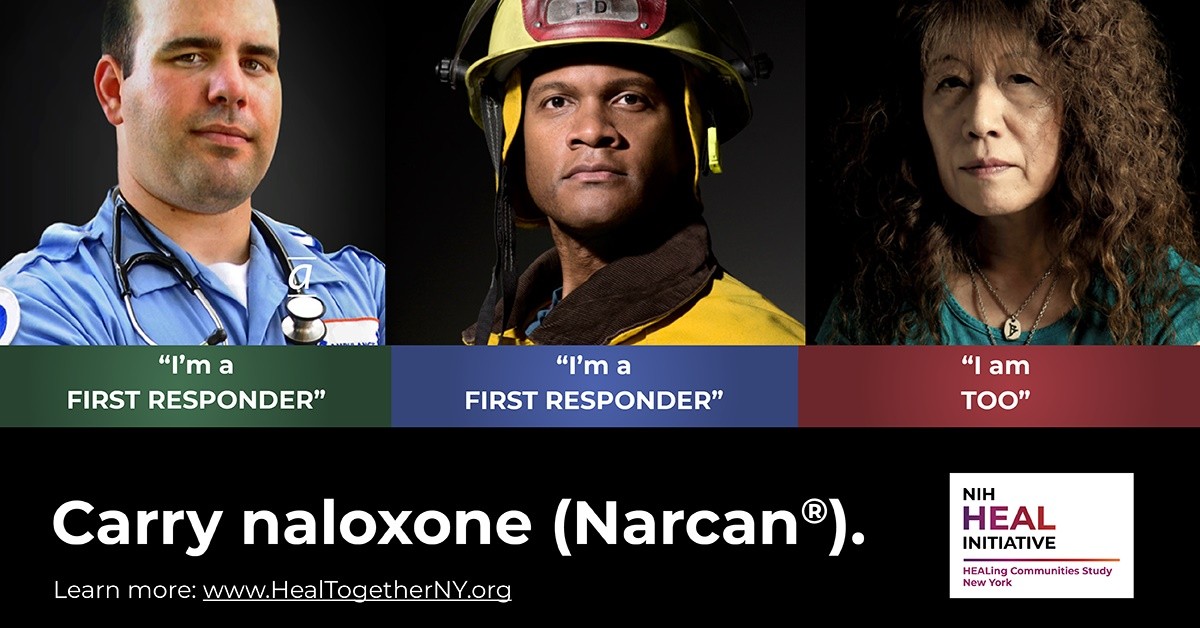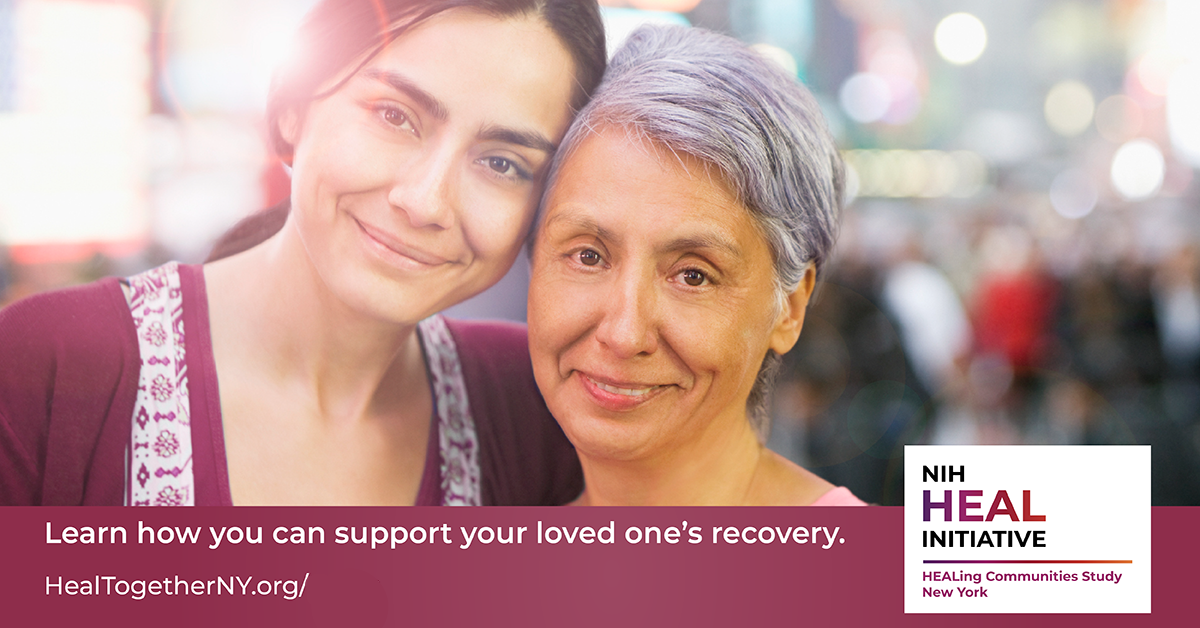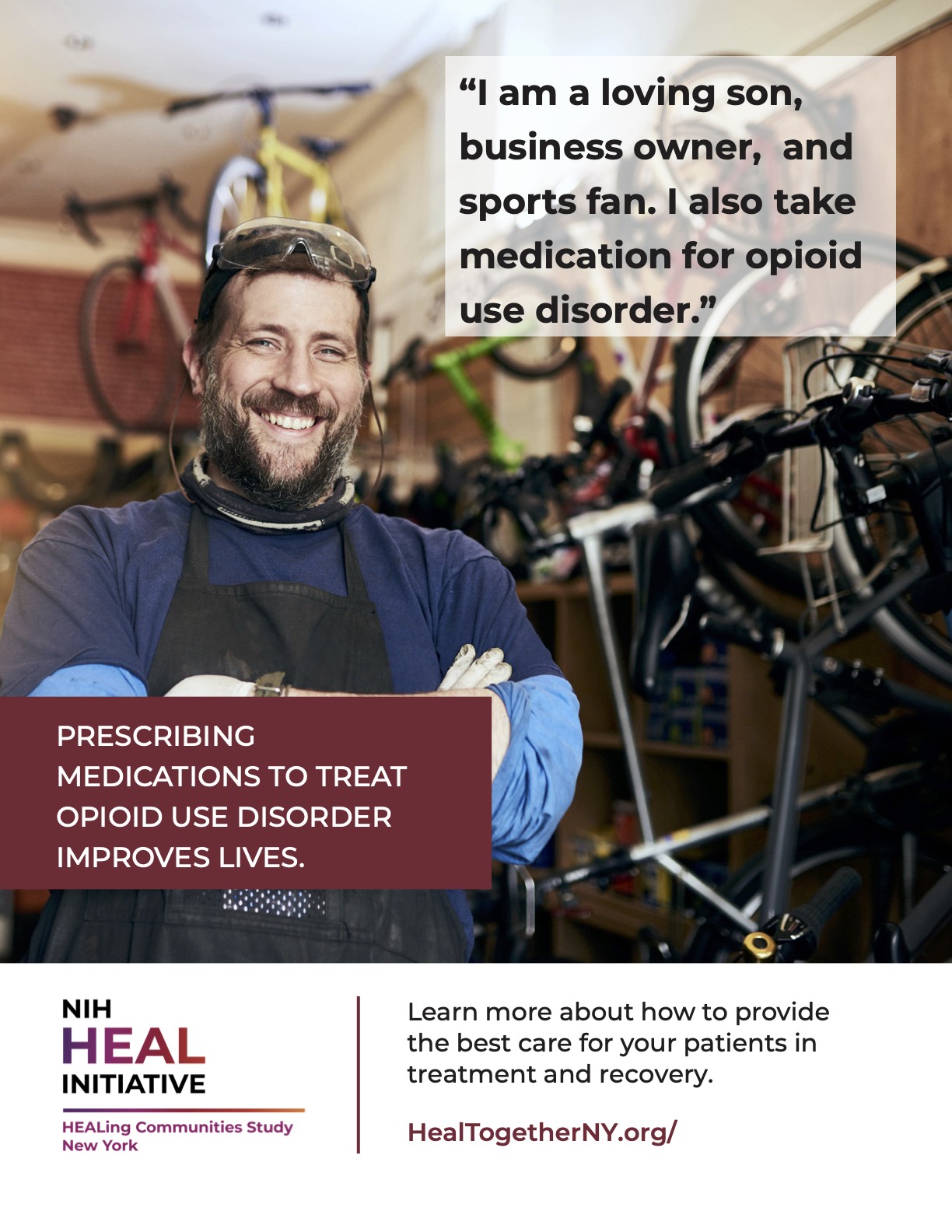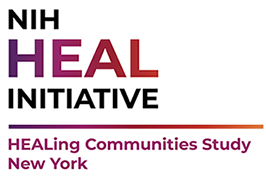The National Institutes of Health (NIH) and the Substance Abuse and Mental Health Services Administration (SAMHSA) launched the HEALing Communities Study (HCS) to investigate how tools for preventing and treating opioid misuse and opioid use disorder (OUD) are most effective at the local level.
The goal of the HCS is to reduce opioid-related overdose deaths by 40 percent over the course of three years. To reach this goal, a core component of the HCS intervention is a series of community-based health communication campaigns. Communication campaigns covered the following topics: Naloxone, MOUD Stigma, MOUD Awareness, and Staying in MOUD Treatment.
Communication campaigns include both paid and unpaid distribution which are informed by data and community knowledge and are determined by communities and the research team. Further, depending on the demographics and unique needs of each community, materials were available in both English and Spanish languages. To enhance the relatability of campaign materials, some of our communities chose to highlight local champions within their communication materials through the use of local faces.
Evaluation components of the HCS communication campaigns include:
- Web Analytics - monitoring traffic to HCS website subpages
- Distribution Tracking - engagement and reach tracking of paid and unpaid dissemination
- Formative Research - conducting surveys with community residents
Campaign 1: Naloxone
The goal of this campaign was to increase demand, access to, and availability of naloxone.
HCS Wave 1 communities implemented this campaign during the start of the COVID-19 pandemic in March of 2020 through October 2020.


Campaign Objectives
- Increase demand, access to, and availability of naloxone
- Address COVID-19’s effect on Persons with OUD (POUD) and their family members
Priority Groups
- Community Leaders
- Healthcare Providers
- People with Lived Experience
Campaign 2: MOUD Stigma
To overcome stigma around medications for opioid use disorder (MOUD), this campaign promoted the fact that using MOUD is an effective treatment for OUD, and MOUD are a path to recovery. HCS Wave 1 communities implemented this campaign from August through November 2021.


Campaign Objectives
- Increase demand for MOUD and naloxone
- Increase access to, and availability of, naloxone
- Increase MOUD prescribing
- Reduce high-risk prescribing
Priority Groups
- Community Leaders
- Healthcare Providers
- People with Lived Experience
Campaign 3: MOUD Awareness
Similar to Campaign 2, this campaign promoted the importance of MOUD with a focus on enhancing awareness that MOUD is an effective treatment for OUD, and MOUD are a path to recovery. HCS Wave 1 communities implemented this campaign from November 2020 through February 2021.

Campaign Objectives
- Increase demand for, access to, and availability of MOUD
- Increase MOUD prescribing
Priority Groups
- Community Leaders
- Healthcare Providers
- People with Lived Experience
